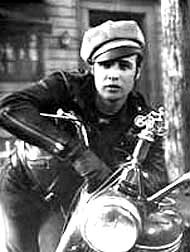|
|
Post by benteen on May 1, 2016 13:33:21 GMT -6
[/p] I'm not convinced that all the command was well-trained and disciplined. The more I read, the more I see a body of men with very mixed levels of combat experience with even greater variations in experience in fighting native Americans in large numbers. The command (once in action) may well have wanted to advance, retreat, manoeuvre and fight in an organised way but there were simply not enough trained men below them to understand, have confidence in, and above all trust implicitly, the orders demanded of them. It's apparent not only in the valley but also on the Hills later in the action.
On the government side the only place where combat trust begins to appear (and is able to be related to future generations) is on Reno Hill where generally both officers and men make clear in their accounts that Benteen was an officer that they could trust. But by that point the command had passed the fear and panic stages of combat stress and had settled down to a survival level of stability. If the native Americans had infiltrated the hill defence sufficiently the cycle may well have broken down again.
From the troopers (and some officers') perspective, there was no obvious escape route from the hill and therefore better to stay put. That was certainly not the case in the valley.
Regards,
Mark
[/quote] Mark, In keeping with your thoughts, the following Fact #533 from the book. The 7th Cavalry was considered one of the better Indian fighting units on the plains, and yet, at the RCOI in 1879, Lt George D Wallace ( Co G part of Renos attack force in the valley fight) said " Many of the men had never been on a horse until that campaign, and they lost control of their horses when galloping into line" Be Well Dan |
|
|
|
Post by crzhrs on May 2, 2016 11:37:49 GMT -6
My point was that IF a "A well-trained and disciplined command led by resolute officers" would have been able to fall back in an orderly manner. Obviously that was not the case with Reno, nor with the Weir Advancement.
One then has to wonder how well trained officers and soldiers were in fighting a non-traditional enemy. Obviously not very well. And that may still be true to this day.
Most Western Armies are trained to fight other traditional opponents with fixed battle lines, expecting what the other side will do and if you lose you can surrender.
Not so in fighting Indigenous People or Guerrilla Fighters who will just as soon slit your throat as take you prisoner.
One again has to wonder just how much training traditional armies get in fighting non-traditional opponents.
It didn't work out very well with Custer, nor with Kidder, Fetterman, even Crook had to struggle to break even with the Sioux/Cheyenne at the Rosebud.
That doesn't include all the "police actions" in the 20th century against non-traditional fighters who don't go by West Point Rules of combat.
I guess no one learns anything from Wars except using over-whelming force which is great if you are fighting the Nazis or the Japanese but struggles against the Viet Cong and street fighers of the Middle East.
|
|
|
|
Post by crzhrs on May 2, 2016 12:10:32 GMT -6
Once Reno made it back up hill and was able to dig in it wouldn't take much courage or leadership to hold out. It became a matter of survival and in most cases people seem to be able to do this a lot more successful when their lives were at stake rather than charging the enemy thinking they will roll over under the "shock and awe" of an attack. It was the fall back of Reno/Custer, retreat, or charges that showed the lack of leadership, combat skill, training, or "chutzpah" that matters. Anyone can be brave and daring when they are charging enmass. It's what happens when what you thought would be a piece of cake turns out to be a rotten apple.
Once warriors turned the tables on Reno and Custer it seems command structure, leadership and chutzpah disintegrated resulting in what the warriors wanted: a wild and out of control meleee fitting the Indians way of fighting.
Resolute leadership failed, excluding Benteen. Reno and for what we can figure out, Custer, seemed to disintegrate as warriors countered as Custer, for whatever reason continued to divide his command in the face of warrior opposition, resulting in Custer's immediate command being divided and in the end taken out piece meal.
Whether this was West Point thinking, panic or believing Custer's Luck would prevail turned out to be one of the most lopsided defeats in the US military history.
Let's not get to crazy about the battle. It was low numbers of losses by the US compared to battles during WWII. But to have "savages", "stone age people" defeating the most famous and well known commander at that time turned it into one of the most celebrated, talked about, written about battles in US history.
I say "Hurrah to the Indians" for doing what anyone would do when your homes/families are attacked just because you want to live your lives like you've always wanted to.
|
|


